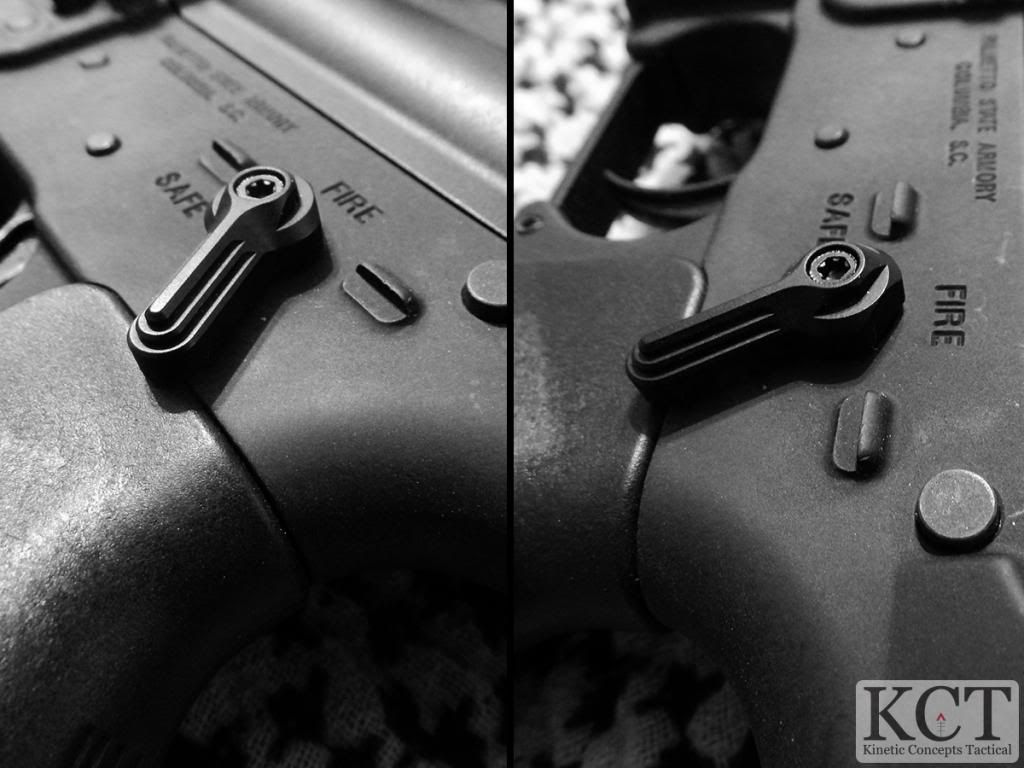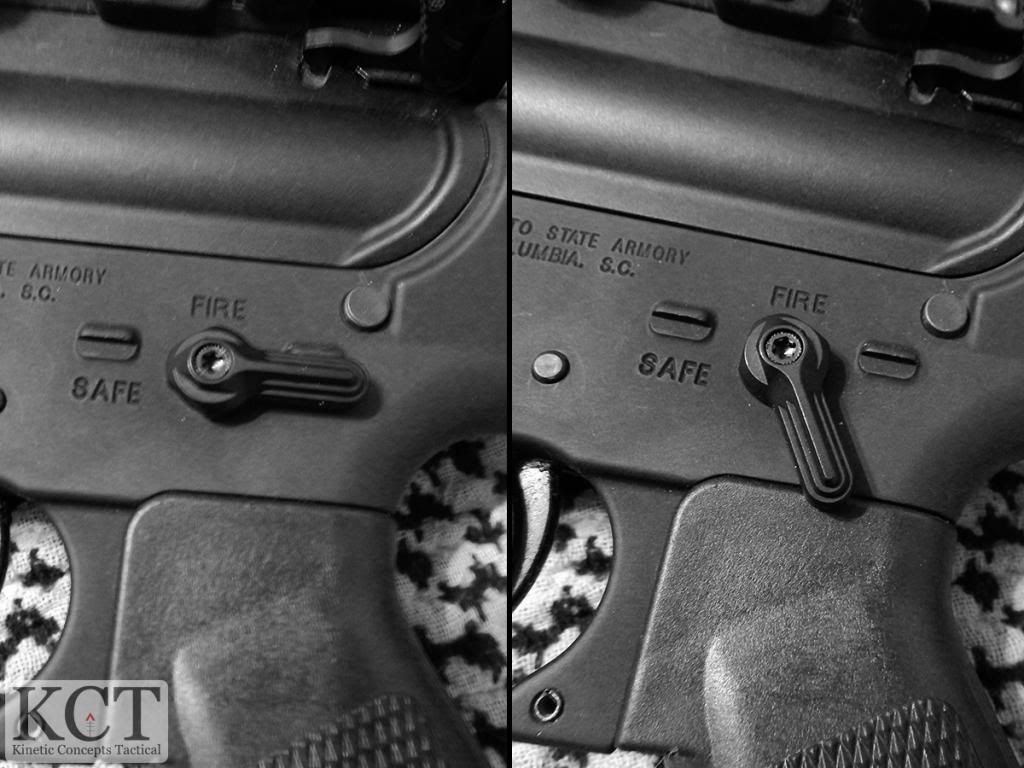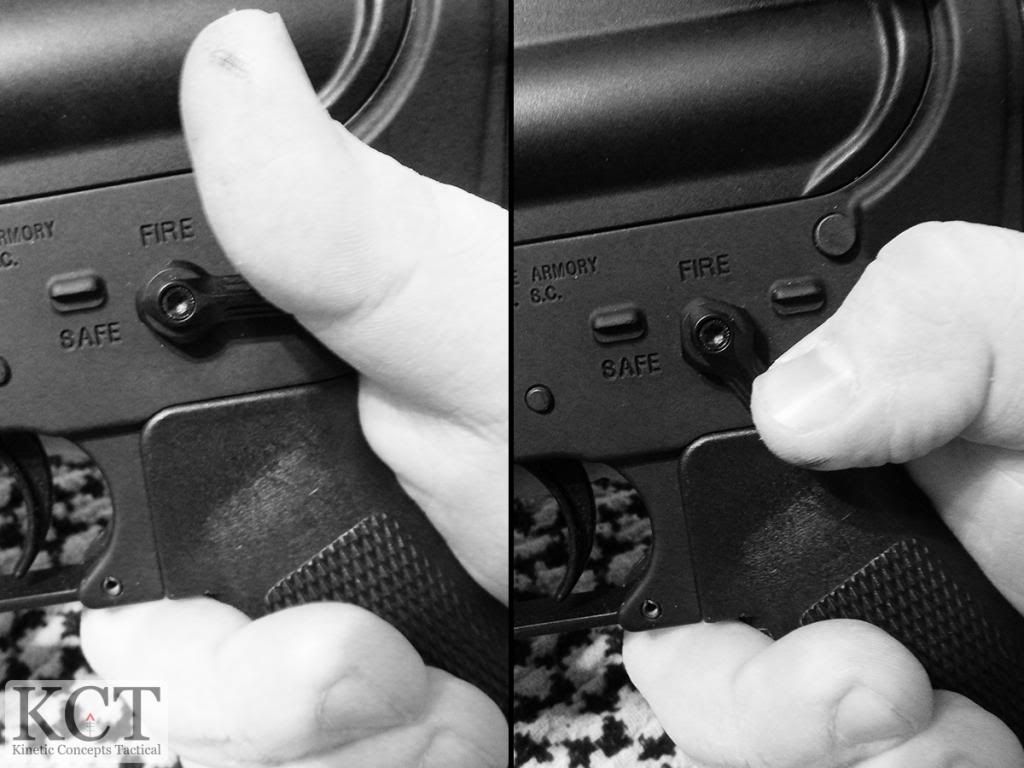Friday, January 24, 2014
V7 Weapons Systems 57-Degree Fire Selector
Overview
As V7 Weapons Systems overhauls the AR-15 platform from one end to the other, they were keen to improve the design of the parts in not just weight, but function as well. They enter the selector switch market with their new 57 Degree Selector.
With the first retail versions of this switch shipping in about a week, V7 graciously allowed us to take a sneak peek at their new offering.
First off, let me say that I have only used standard mil-spec selector switches. I haven't felt the need to hop on the 45-degree train, because the mil-spec's 90-degree pivot works fine for me. I have used a 45-degree selector a few times while running someone else's gun, so I'm familiar with the feel and function. I have gotten used to the variance of the standard switch's throw, some are mushy, some are crisp, some give a positive click, some slither into place. I've been using these for years, and I've never felt the need to change. There, I said it.
The V7 switch replaced the mushiest switch I have ever used, a PTAC switch installed in a PSA lower. When I installed the V7, I was going to replace the spring and detent as well, however I decided against it, as that would let me know if the spring or detent were bad, or if the switch was just sluggish. It was the switch.
The throw of the V7 was crisp and clean, without the creep or mushy click of a lot of standard selectors. When you take a look at the inside of the selectors, it's easy to see why. The V7 has a much better finish, and feels a lot smoother in the hand. V7 states that it uses Gear Kote GK 3000, a high-end dry film lubricant, which is the reason for much of the switch's clean throw and responsive seating in each position. If you want to learn more about that, check them out here:
Another reason for the V7's crisp action is the excellent machining. The piece is finished very smoothly, and extra care was taken on the detent channel and cutouts. Up close, the difference between the V7 and mil-spec version is very noticeable.
Speaking of noticeable, there is quite a bit of difference in weight between the V7 and mil-spec switch. The kind you can notice by just picking up each part. We'll get back to you with the actual part weights, and V7 claims that this is about 50% lighter than the standard mil-spec part.
These selectors are being listed on V7's store now for 49.99 USD. You can view the full details HERE.
Function
I couldn't resist running a lot of dry-fire presentations in my testing before we took it to the range. Most of the standard selectors I have used seem to flick between the positions once they cross a certain point in the throw. Usually this feels like once it crosses halfway between positions, or 2/3rds in some cases. Normal switches almost seem to gravitate towards one position or the other. The V7 is a little different in that it has a very positive "set" to each position, and doesn't leap from the user's hand. Much of this has to do with the 57-degree throw compared to the standard 90-degree throw. Additionally, there is a steady friction across the entire travel of the switch, making it a very deliberate movement to go to fire or safe.
Being so used to the action of the standard lever, the V7 lever took a bit of getting used to for me. I kept wanting to push the selector past where it stops. Once I got over that, the selector felt very natural. The surface finish that V7 applied, as well as the aggressive texture kept my thumb from sliding off the switch until it had taken its proper position, at which time I simply rode my thumb over the switch and completed my firing grip. The switch was worked with the bottom of the last knuckle on my thumb rather than the pad, as it fell very naturally into that spot. While working the switch over and over for a few hours, my thumb got a bit sore from rubbing against the switch, but that's to be expected, and my thumb was told to grow a beard and toughen up.
Now for the million dollar question. Why have a 57-degree arc of travel? If you look at the 45-degree levers, its clear that the throw just splits the difference on the 90-degree switch. It was designed for those who wanted a shorter throw on their selectors, but was not optimized for function or individual ergonomics. The 57-degree switch was designed for shooters who want a bit more of a traditional feel to their switch with the convenience of a short-throw lever.
Of course, since this is an AR accessory, the fact that it's unique and different will be enough for some people to give it a try. I fall in that crowd quite often as well, but I can honestly say that the switch satisfied my need for something different and a fast-action short throw lever.
V7 provided this part as one of the first ones made, so there may be some differences in the production model. Our sample came with the lever installed on the core and secured with blue loctite. When we were discussing this product with V7, they indicated that they were working on another lever profile and an ambidextrous model, so if you were wanting a short-throw selector but didn't like the other offerings out there, V7 will have something for you shortly.
We'll keep you updated as we run this through its paces. So far, it looks like V7 has another hot item on its hands when you consider the ergonomics and substantial weight savings of their new switch.
You can see V7's entire line of components here.
Thank you for your interest in our article and site. Please take a moment to view the kydex holsters that we make, all at an extremely affordable price! Visit the store here: KCT Kydex Web Store
Subscribe to:
Post Comments (Atom)





No comments:
Post a Comment